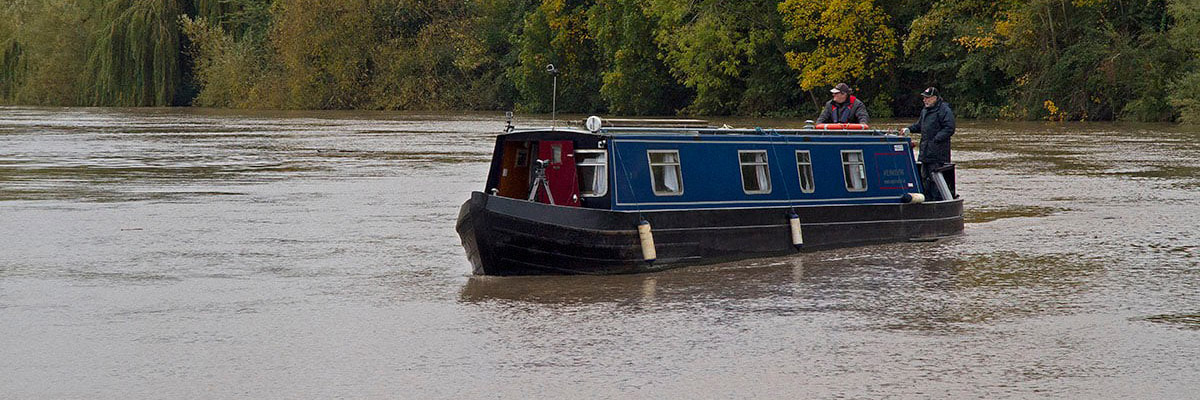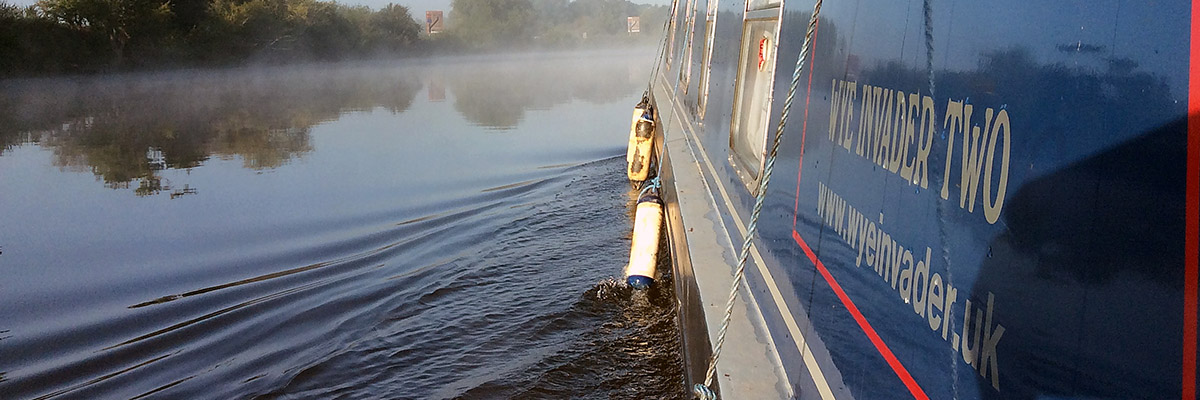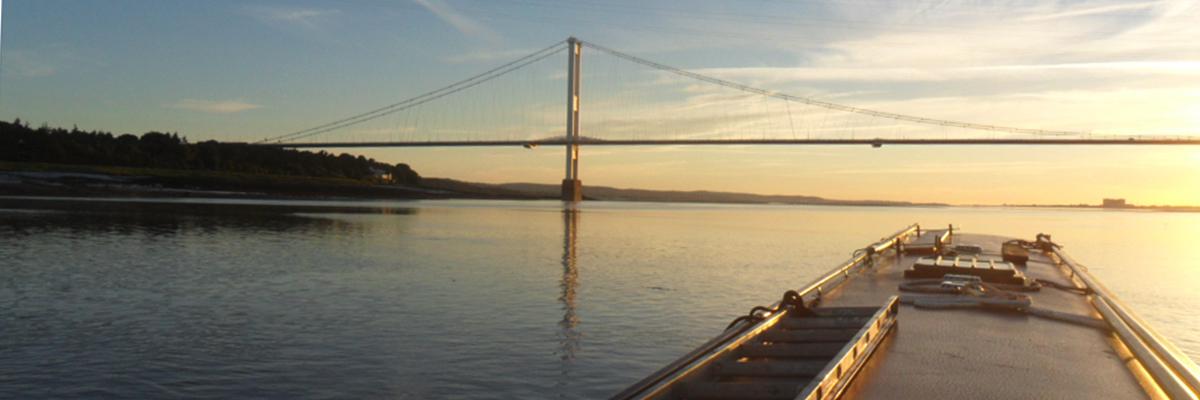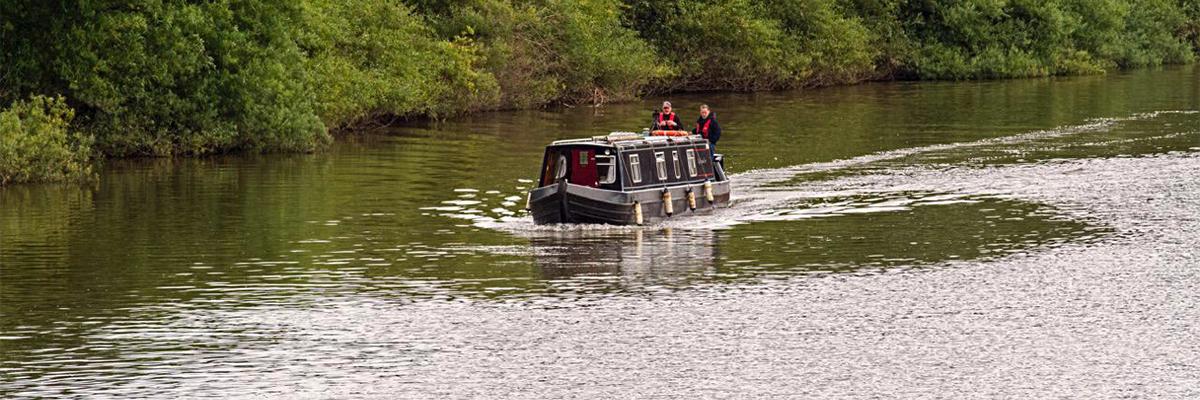Wye Invader Two
The Insurance inspection in 2010 for Wye Invader laid down several conditions, the most important being Wye Invader should be Dry Docked by the Summer of 2013 and any necessary repairs carried out before reinsurance. We navigated the 75 miles back down the Wye in late 2012 and early 2013 and then the additional 12 miles to the dry dock at Sharpness via the River Severn. Not being able to use the Barge because of its size (38 metres long, 5 metre beam and 2 metre draft) and with the additional requirement of a Pilot onboard anywhere in the Gloucester Harbour area, I started to ponder the possibility of acquiring a small Narrowboat, I spent many nights online looking at boats for sale, along with any books or magazines on the subject I could find.
After a few months I made a list of what I required in order of priority:
- Regardless of age it should have been built to a good standard with 10mm bottom plate, 6mm sides, and should appear as if it had been well looked after.
- Engine should have no timing belt but a chain and be either Japanese or South Korean, there should be a service history.
- Toilet should not be a cassette type but have a holding tank with a pump out facility
- Water storage in the bow tank
- Fuel Tank should be large capacity
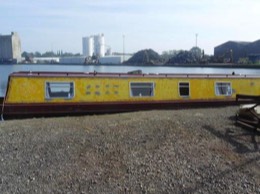
After acquiring the Narrowboat towards the end of April 2014, paying the necessary license fee to the Canal River Trust and a 6 month mooring fee to Saul Junction Marina, it was time to leave the mooring in Worcester, via the canal to Diglis basin then down 2 locks on to the River Severn. The total distance to the mooring at Saul Junction is about 37 miles, the first leg to Upton on Severn of about 10 miles took just over 3 hours and seemed OK but we noticed 2 potential problems.
There was diesel leaking from the fuel pump, however after further investigation showed the leak had been there for some time as diesel absorbent material had been placed under the engine sump in the bilge. We later found the leak was from a low pressure leak off pipe between No 1 and No 2 diesel injectors, £2 for a new pipe, 10 minutes to fix. The second problem only occurred when the engine speed was increased over 1400 revolutions, this had the potential of being expensive. When I had the boat on test on the Canal, because the canal was narrow and had speed restrictions, it had not been possible to open the engine up. When the speed was increased, the coolant in the header tank appeared to get get warm and air bubbles went into the expansion tank.
There was diesel leaking from the fuel pump, however after further investigation showed the leak had been there for some time as diesel absorbent material had been placed under the engine sump in the bilge. We later found the leak was from a low pressure leak off pipe between No 1 and No 2 diesel injectors, £2 for a new pipe, 10 minutes to fix. The second problem only occurred when the engine speed was increased over 1400 revolutions, this had the potential of being expensive. When I had the boat on test on the Canal, because the canal was narrow and had speed restrictions, it had not been possible to open the engine up. When the speed was increased, the coolant in the header tank appeared to get get warm and air bubbles went into the expansion tank.
Later that evening, looking through the service history, service work sheets and invoices, it was clear that there had been a problem for a long time. The next morning before we left Upton on Severn on the 2nd leg, to Gloucester of about 19 miles, I checked the engine oil and gearbox oil level as well as the coolant, all were to their marks, however the pressure cap for the coolant tank had a part missing, a small rubber ring that helped to maintain the pressure in the water jacket that cools the engine. The run to Gloucester took about 6 hours, we kept the engine to about 1400 revolutions maximum. The lack of pressure in the water system didn’t help, previously on the Canal it hadn’t been a problem for anyone hiring the boat as they wouldn’t have gone fast enough for the boat engine to get hot.
The last leg, Gloucester to Saul Junction was about 8 miles. I checked all the oils and coolant levels, they were fine and we left at 11.00hrs, 3hrs later we were moored up in Saul Marina.
The last leg, Gloucester to Saul Junction was about 8 miles. I checked all the oils and coolant levels, they were fine and we left at 11.00hrs, 3hrs later we were moored up in Saul Marina.
Over the next 5 months until the end of September, we were out on the canal 3 or 4 days every week, either down to Sharpness or up to Gloucester. I replaced the pressure cap, this combined with bleeding the swim tank sorted the engine over-heating, this also gave a modest increase in performance. At the same time I arranged for the fuel and fuel tank to be cleaned, as a safety precaution before going on the tidal River Severn.
By the last week of September summer had almost returned, the narrowboat was still in ABC Leisure colours, red and yellow, that was about to change. I arranged with Stephen Beacham, the Operational Director of Sharpness Shipyard and Dry Dock to have the use of 15 metres of their yard fronting the dock, this would enable the port and starboard cabin sides to be sanded down and resprayed without lifting the boat out of the water, simply by turning the boat in the dock and taking advantage of the warm weather drying the paint. 3 days later the colour had changed to dark blue on the cabin sides and mid grey on the roof. The stern and bows could wait until she was lifted out in a months time.
3 weeks later on the 26th October 2014 we came off the Canal through the swing bridge and into the dock, just outside the dry dock. We moored up to wait for the yard to crane us out. Due to constant high winds, this took a few weeks for the weather to settle down and by mid November all the boats were out on the hard standing.
3 weeks later on the 26th October 2014 we came off the Canal through the swing bridge and into the dock, just outside the dry dock. We moored up to wait for the yard to crane us out. Due to constant high winds, this took a few weeks for the weather to settle down and by mid November all the boats were out on the hard standing.
Be sure to keep up to date with Wye Invader Two - https://www.facebook.com/pg/wyeinvadertwo
